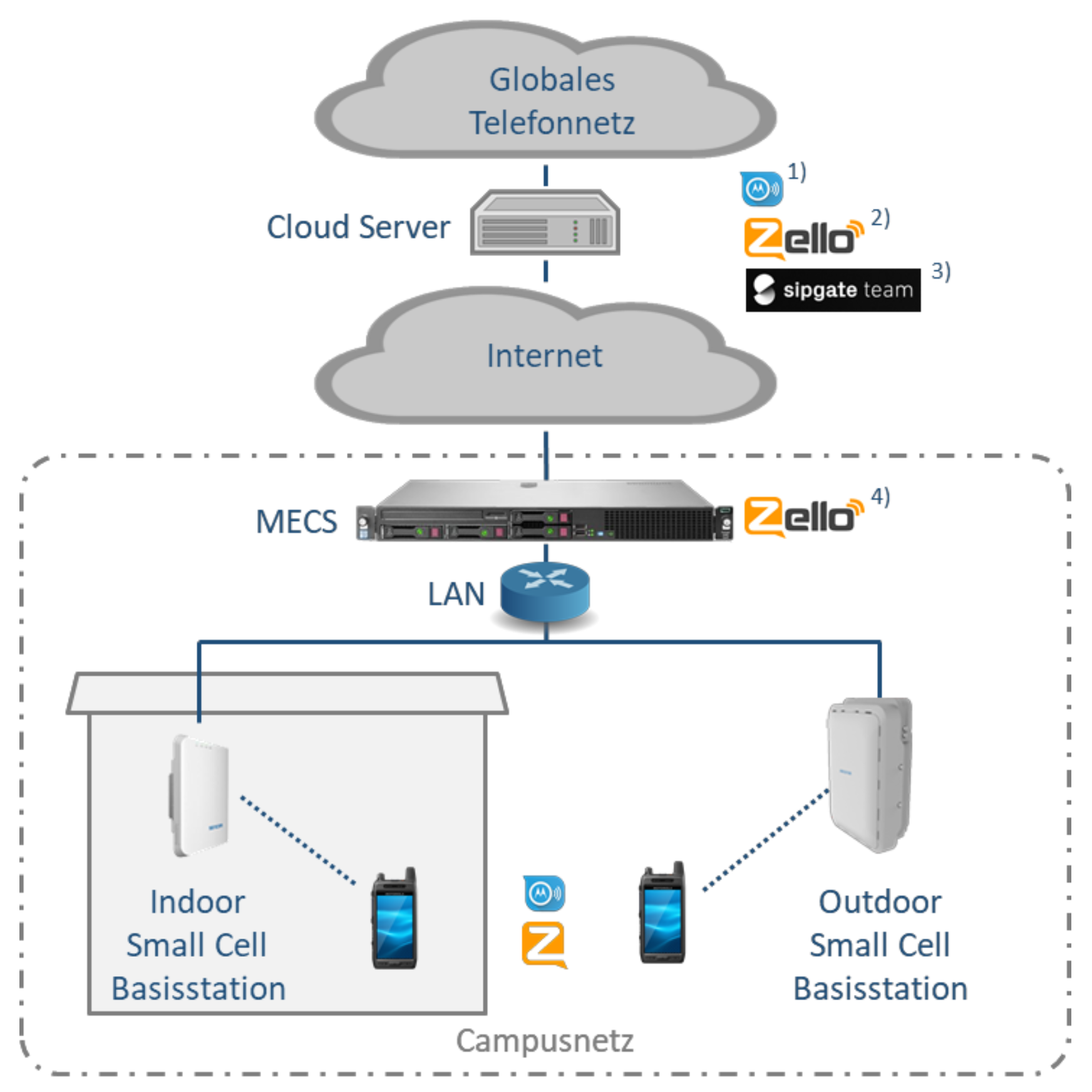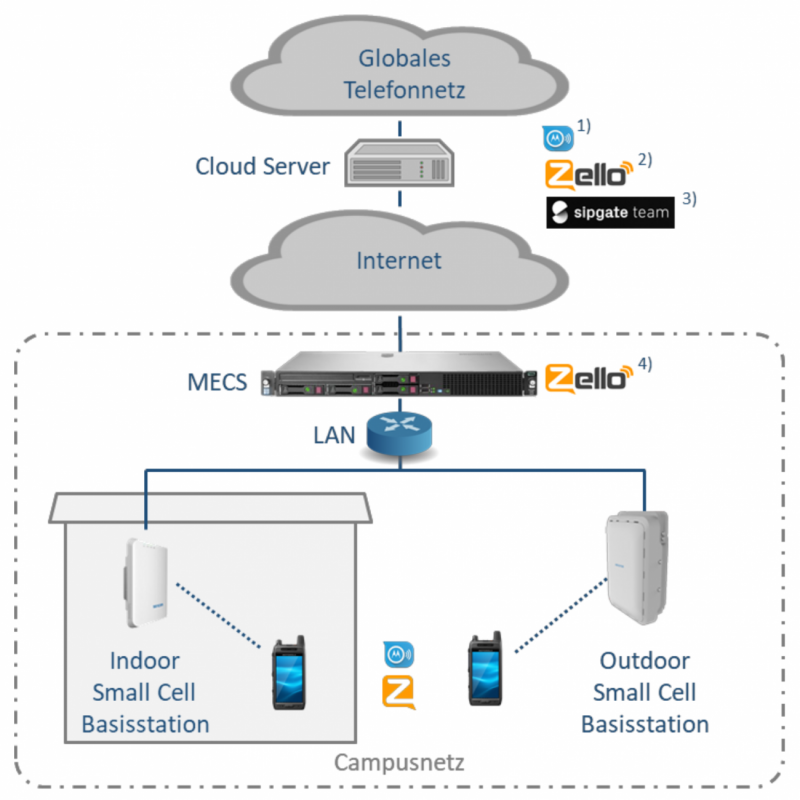Sponsors Article
Critical applications belong in the campus network
Sponsor article

MECSware campusXG Voice system solution (Picture: MECSware)
1) Motorola Solutions WAVE PTX
2) Zello PTT
3) Sipgate team
4) Zello PTT als MECS App (on-premise)
Digitization and communication
Smartphones play a crucial role in digitization in all areas of the economy. Outdated, DECT-based systems for in-house voice communication will sooner or later be replaced by smartphones. Often, not only simple telephone connections are required, but also functions such as group calls or push-to-talk (“walkie-talkie”). Until now, two technical alternatives have been available for this:
WIFI
With this alternative, the end devices connect to the nearest WLAN access point (AP) of the local area network (LAN). The function of the previous PBX is either implemented on a local server (on-premise) or provided by a service provider (on-cloud). However, under heavy load, a WLAN cannot provide the necessary quality of service (QoS). Furthermore, connection interruptions can occur during the transition between access points (WLAN roaming).
Public mobile network
With this alternative, the terminals establish a connection to a base station of a public network operator. The PBX function is provided in virtualized form by the network operator as an additional service. In principle, a mobile radio-based solution has the following advantages over WLAN:
- Deterministic connection quality (QoS)
- Seamless handover of the connection between radio cells
- Secure SIM-based authentication
However, consistently good mobile radio coverage, especially inside buildings, is not available everywhere.
The private network has a solution ready
Since the end of 2019, there has been another alternative in Germany that combines the advantages of the two aforementioned solutions. A private 4G/5G mobile network (campus network) is based on the same technological principles as the public mobile network. Upon request, the Federal Network Agency will exclusively allocate the necessary frequencies.
In this way, critical applications can use the campus network, while less critical ones continue to run on the WLAN infrastructure. For example, a hospital’s employee communications, including group calling, would use the campus network while patients are provided the WLAN for private use.
If high demands are placed on robustness or additional controls are required for functions such as push-to-talk (“walkie-talkie”), special smartphones are used that are also available for the “campus network frequency” (3.7-3.8 GHz).
With the campusXG system solution from MECSware, a campus network can be planned, installed and operated as easily as a WLAN. Based on the standardized functions of a 4G/5G mobile network, a radical simplification of the architectures was implemented in the system concept in addition to an adaptation to the size of a campus network (downscaling). The web-based user interface includes the core network, base stations, end devices and additional applications (MECS apps) and is similar to that of an IP router, so that IT specialists can immediately find their way around.
Learn about the technology now using the 5G Network Evaluation Kit.


